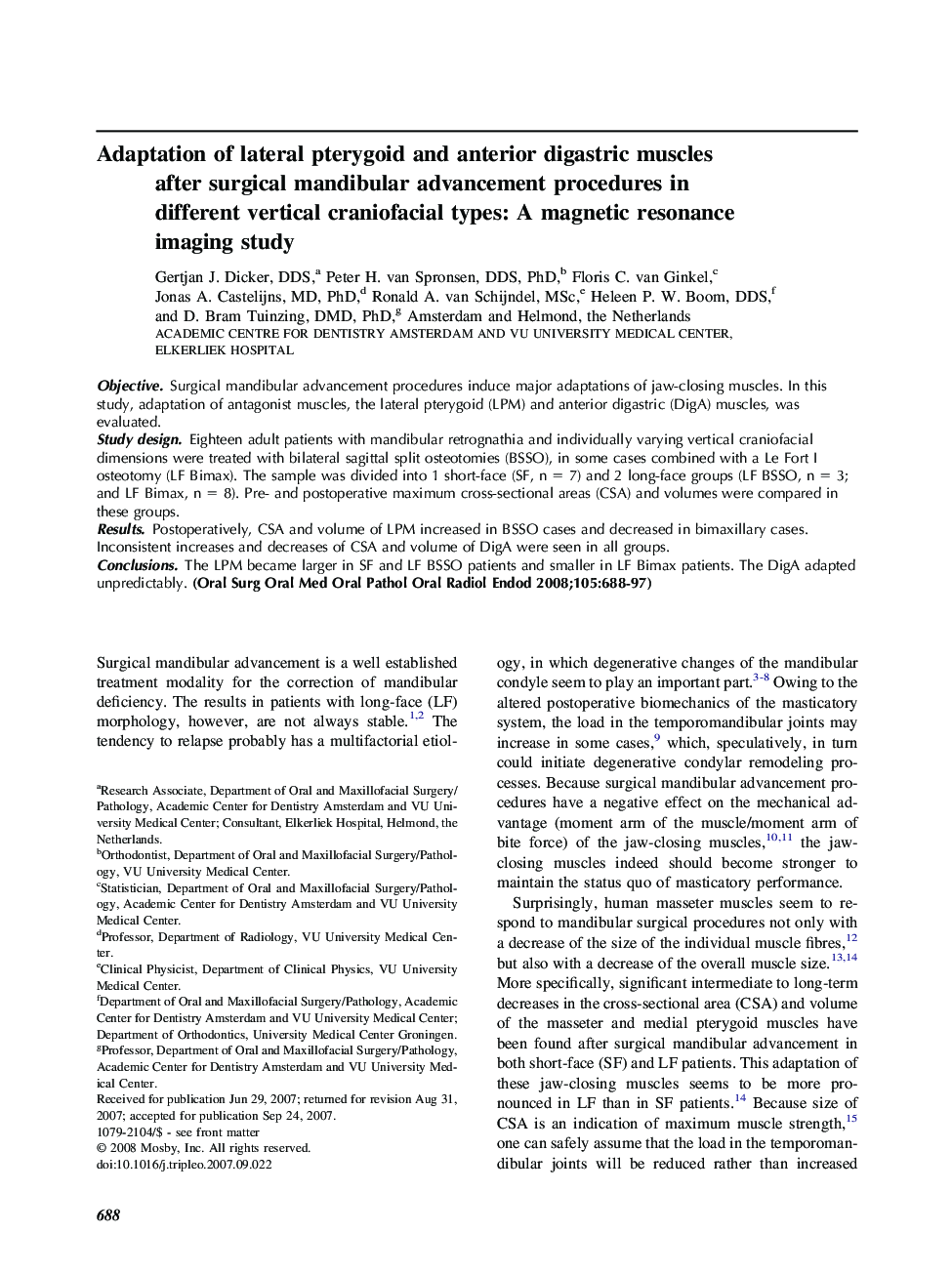| Article ID | Journal | Published Year | Pages | File Type |
|---|---|---|---|---|
| 3168655 | Oral Surgery, Oral Medicine, Oral Pathology, Oral Radiology, and Endodontology | 2008 | 10 Pages |
ObjectiveSurgical mandibular advancement procedures induce major adaptations of jaw-closing muscles. In this study, adaptation of antagonist muscles, the lateral pterygoid (LPM) and anterior digastric (DigA) muscles, was evaluated.Study designEighteen adult patients with mandibular retrognathia and individually varying vertical craniofacial dimensions were treated with bilateral sagittal split osteotomies (BSSO), in some cases combined with a Le Fort I osteotomy (LF Bimax). The sample was divided into 1 short-face (SF, n = 7) and 2 long-face groups (LF BSSO, n = 3; and LF Bimax, n = 8). Pre- and postoperative maximum cross-sectional areas (CSA) and volumes were compared in these groups.ResultsPostoperatively, CSA and volume of LPM increased in BSSO cases and decreased in bimaxillary cases. Inconsistent increases and decreases of CSA and volume of DigA were seen in all groups.ConclusionsThe LPM became larger in SF and LF BSSO patients and smaller in LF Bimax patients. The DigA adapted unpredictably.
